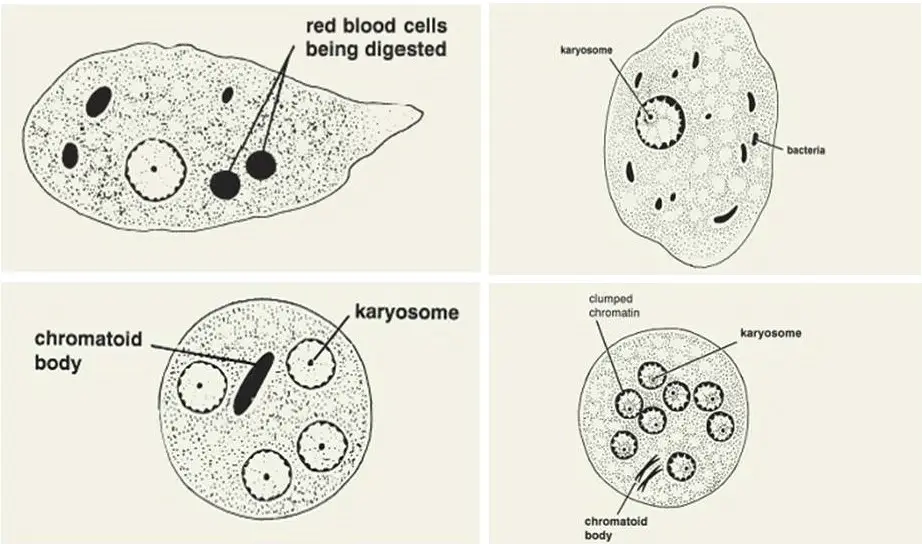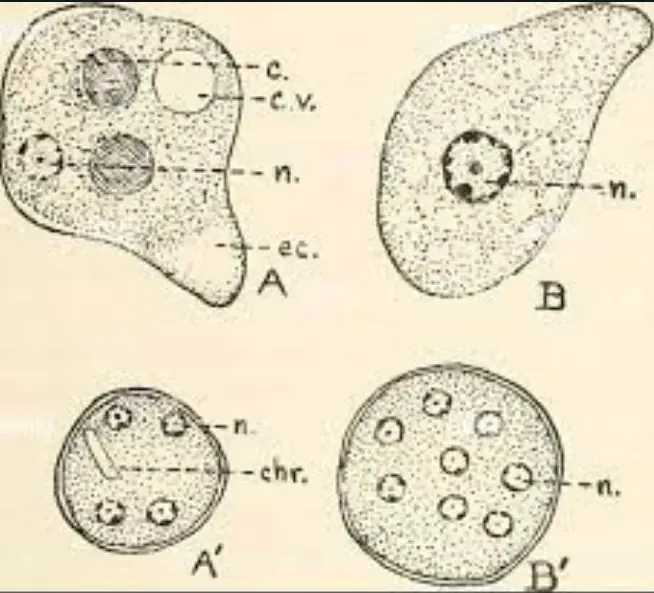The digestive tract is full of bacteria and other microorganisms that play an integral role in keeping us healthy. While some of these microorganisms are beneficial, others can cause serious health issues. In this blog, we will look at the differences between two common gastrointestinal pathogens, Entamoeba histolytica and Escherichia coli, and how they can affect our health.
Key differences between e. histolytica & e. coli

The two organisms Escherichia coli (E. coli) and Entamoeba histolytica (E.
E. coli is a Gram-negative, rod-shaped bacterium that is found in the human gut.
By contrast, E. histolytica is a single-celled protozoan that can cause a serious gastrointestinal illness.
E. coli is associated with foodborne illnesses, including diarrhea, fever, and abdominal cramps.
By comparison, E. histolytica is the leading cause of intestinal amoebiasis, which is characterized by bloody diarrhea, abdominal pain, and tissue destruction. In terms of transmission, E. coli is typically spread through contaminated food or water, while E. histolytica is spread through fecal-oral contact. In short, the key difference between E. coli and E. histolytica is that the former is a bacterial infection while the latter is a protozoan infection, leading to different clinical manifestations and modes of transmission.
Morphology and structure of e. histolytica & e. coli

The morphology and structure of two distinct species of microorganisms, Entamoeba histolytica and Escherichia coli, can have significant differences. Entamoeba histolytica is a single-celled protozoan parasite that is known to cause disease in humans. It is characterized by its amoeboid shape which consists of an outer membrane, a nucleus, and various cytoplasmic organelles.
It is characterized by its amoeboid shape which consists of an outer membrane, a nucleus, and various cytoplasmic organelles. In contrast, Escherichia coli is a Gram-negative, rod-shaped bacterium which is commonly found in the human gut. E.
coli typically has a thin cell wall made up of peptidoglycan, an inner membrane, and a periplasmic space. While both types of microorganisms have a nucleus, the structure and function of the nucleus of E.
coli. In E.
histolytica, the nucleus contains multiple nucleoli and is involved in the production of ribosomes and other organelles. In contrast, the nucleus of E. coli is only involved in DNA replication, transcription, and translation. Additionally, the flagella of E. coli are used for motility, while the pseudopods of E. histolytica are used for locomotion. Clearly, E. histolytica and E. coli have distinct morphologies and structures, making them unique and easily identifiable in the microbial world.
Common symptoms of e. histolytica & e. coli
When it comes to symptoms, it can be difficult to differentiate between the two gastrointestinal diseases caused by the parasites Entamoeba histolytica (E. histolytica) and Escherichia coli (E.
coli). While both parasites can cause similar symptoms such as abdominal pain, nausea, diarrhea, and vomiting, the differences between the two are quite significant. E.
histolytica is found in contaminated food and water and can result in a more severe form of amebiasis, while E. coli is found in contaminated food and water and can cause foodborne illness. In addition, E.
In addition, E. histolytica can cause liver abscesses, while E. coli can cause urinary tract infections.
Furthermore, E. histolytica is more commonly found in tropical climates, while E. coli is found worldwide. Therefore, knowing the difference between the two parasites is essential for proper diagnosis and treatment.
Diagnosis of e. histolytica & e. coli
When it comes to understanding the differences between e. histolytica and e.
coli, it’s important to know that both are bacteria, but of different types. E. histolytica is an anaerobic parasitic bacterium that can cause diarrhea and tissue destruction, while E.
coli is a facultative anaerobic Gram-negative bacterium that can cause gastrointestinal infections. Diagnosis of e.
histolytica and e. coli is often done through a combination of physical examination, laboratory testing, and imaging studies. Symptoms and signs of infection with either organism can vary, depending on the severity of the infection.
A laboratory test can help differentiate between the two bacteria and provide a diagnosis. Generally, E. histolytica is treated with antibiotics and, in some cases, surgical removal of the affected tissue. Treatment for E. coli is typically with antibiotics and supportive care. Knowing the differences between e. histolytica and e. coli is important for proper diagnosis and treatment.
Treatment of e. histolytica & e. coli
When it comes to the treatment of e. histolytica and e. coli, it is important to understand the key differences between the two organisms.
E. histolytica is a parasitic protozoan that lives in the human gut, while e.
coli is an intestinal bacterium. These two organisms have different causes, symptoms, and treatments. For instance, e.
For instance, e. histolytica can cause dysentery, whereas e. coli is typically responsible for food poisoning.
In terms of treatment, e. histolytica is usually treated with antibiotics, while e. coli is typically treated with rehydration and supportive care. Understanding the differences between e. histolytica and e. coli can help ensure the proper diagnosis and treatment of these two organisms.
Prevention of e. histolytica & e. coli
E. histolytica and E. coli are two different types of bacteria that can cause illness in humans.
coli are two different types of bacteria that can cause illness in humans. While they are both considered intestinal pathogens, they have distinct differences that make it important to understand how to prevent them. E.
histolytica is an anaerobic organism that lives in the intestines and causes a variety of intestinal disorders, including amoebiasis. On the other hand, E. coli is an aerobic organism that lives in the intestines and is responsible for food poisoning.
coli is an aerobic organism that lives in the intestines and is responsible for food poisoning. The best way to prevent E. histolytica and E.
coli is to practice safe food handling, adequate hygiene, and careful handwashing. Additionally, E. histolytica can be prevented by avoiding contaminated food and water, while E. coli can be prevented by avoiding undercooked meat, poultry, and eggs. By understanding the differences between these two organisms, you can take the necessary measures to prevent illness.
Final Touch
In conclusion, Entamoeba histolytica and Escherichia coli are two different species of microbes. Entamoeba histolytica is a protozoan that is a common cause of human intestinal infections, while Escherichia coli is a bacterium that can cause a wide variety of illnesses. Entamoeba histolytica is primarily transmitted through contaminated food or water, while Escherichia coli is transmitted through contact with an infected person or animal.
Additionally, the treatment and prevention of infection for each of these species is different. It is important to recognize the differences between these two microbes to ensure proper diagnosis and treatment.

